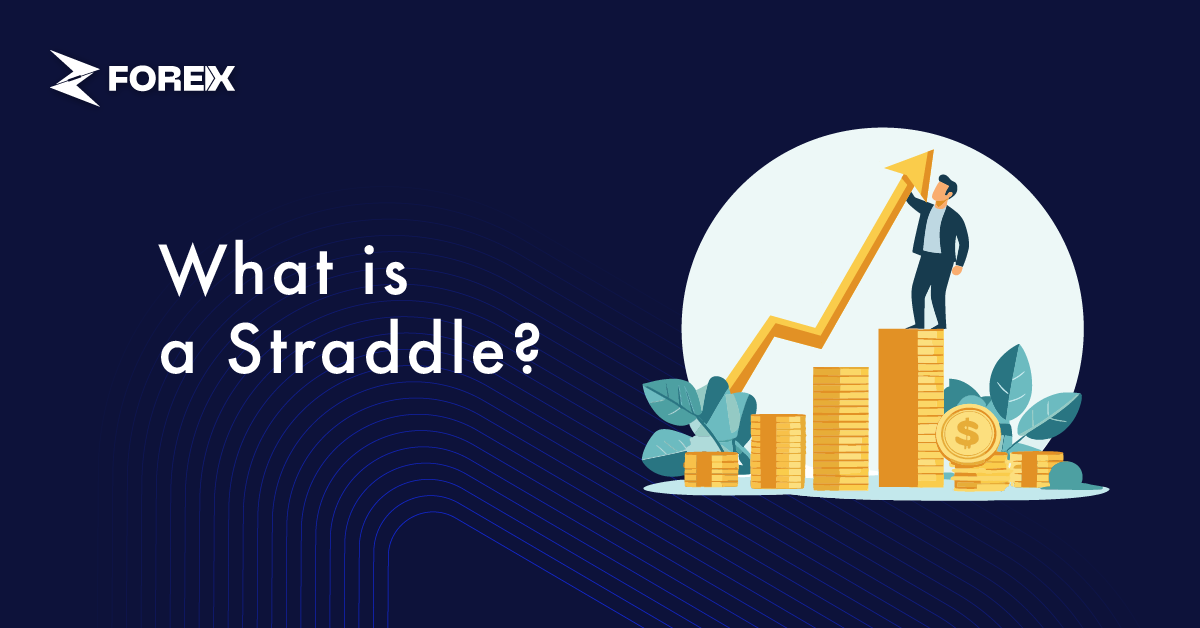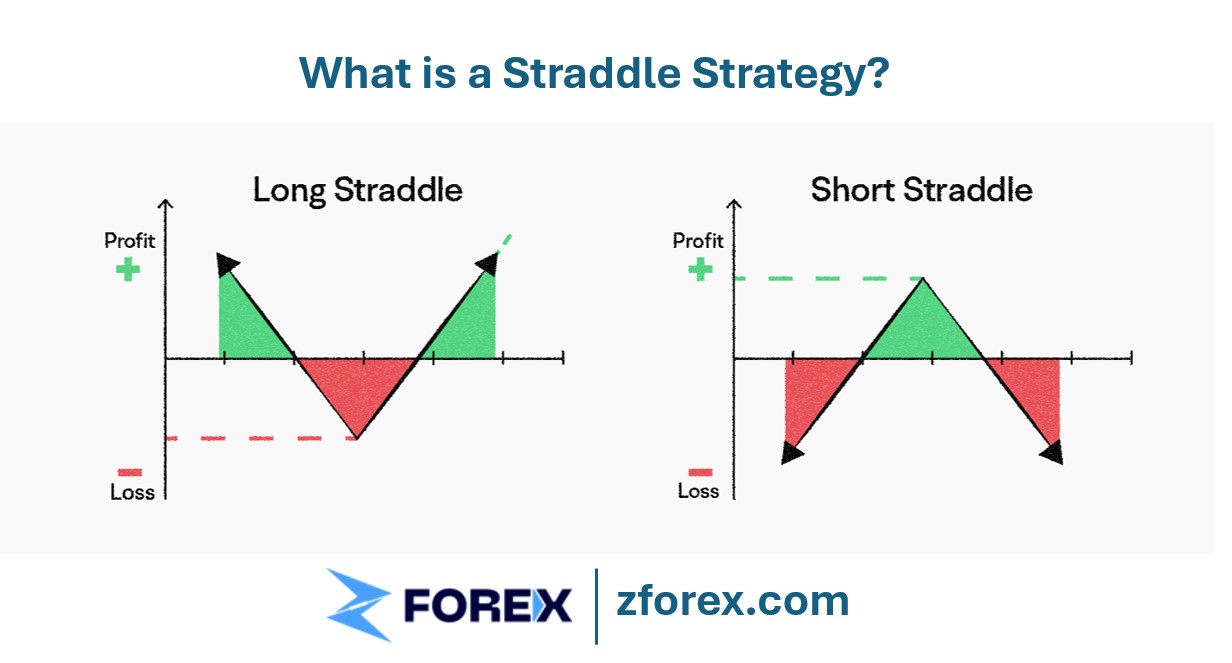
A straddle is an options trading strategy where an investor buys both a call option and a put option on the same asset, with the same strike price and expiration date. This strategy is used when the investor expects the asset's price to move significantly, but is unsure whether it will go up or down.
By holding both options, the investor can profit from large price movements in either direction. The straddle is a way to potentially gain from volatility in the market, regardless of the direction of the price change.
There are two main types of straddles in options trading: the long straddle and the short straddle. Both types of straddles are strategies to profit from market conditions and can be effective based on the investor's view of the asset's potential price swings.

In a long straddle, the investor buys both a call option and a put option on the same asset with the same strike price and expiration date. This approach is used when the investor expects a significant price movement in the asset but is not sure of the direction. The investor benefits if the asset's price moves up or down, as either the call or put option will gain value, potentially leading to a profit.
Example:
An investor expects Company A's stock price to move significantly after its earnings report but is unsure of the direction. They use a long straddle strategy by buying both a call and a put option with the same strike price of $50 and expiration date.
If the stock price jumps to $60, the call option gains value. If it drops to $40, the put option gains value. The investor profits from the large price movement either way. If the stock price stays around $50, the investor may lose the cost of the options.
The investor sells both a call option and a put option on the same asset in a short straddle, again with the same strike price and expiration date. The main mindset behind this approach is predicting that there will be little to no price movement in the asset. The investor benefits from the profits received for selling the options as long as the asset's price remains relatively stable and the options expire without being exercised.
Example:
Let's say Company B's stock price is expected to remain stable and the investor uses a short straddle strategy. The investor sells both a call and a put option at a $100 strike price, receiving a premium from each.
If the stock price stays near $100, the options expire worthless, and the investor keeps the premiums as profit. However, if the stock price goes up or down a lot, the investor could lose money because they might have to buy or sell the stock at unfavorable prices.
In a straddle, "in-the-money" (ITM) means that both options (call and put) have intrinsic value, with the call option's strike price below the market price and the put option's strike price above it. This usually makes ITM options more expensive. "at-the-money" (ATM) means the strike price of both options is very close to the current market price of the underlying asset, meaning they primarily have time value and little to no intrinsic value. An ATM straddle is typically used when an investor expects notable price movement in either direction.
Time value is the value based on how much time is left before the option expires.
Intrinsic value refers to the difference between the option's strike price and the current market price of the asset.
Key Takeaways
The success of straddles depends on research and accurate market predictions. Straddles offer the potential for substantial returns while also carrying high risk due to the premium paid for the options. A detailed analysis of market conditions, companies, and the asset's volatility is necessary for successful implementation.
What is a straddle in options trading?
A straddle is a strategy where you buy both a call and a put option with the same strike price and expiration date, allowing you to profit from big price movements in either direction.
When should I use a long straddle?
Use a long straddle when you expect the price of an asset to move a lot but aren't sure if it will go up or down. This strategy is ideal for times when there's expected volatility, like before an earnings report.
What are the risks of a short straddle?
The risk of a short straddle is potentially limitless losses if the asset's price moves a lot. Because you are selling both a call and a put option, a big price change in either direction can result in significant losses.
What is an At-the-Money (ATM) straddle?
An ATM straddle involves buying or selling both a call and put option with a strike price near the current market price. It is used when expecting a lot of price movement, allowing profit from large changes in either direction.
 Precious Metals Ratios Against Gold
Precious Metals Ratios Against Gold
Learn what precious metals ratios mean. See what gold-silver, gold-platinum, gold-palladium, and gold-copper ratios tell traders.
Detail How to Share Access to a cTrader Account
How to Share Access to a cTrader Account
Learn how to share access to another cTrader account with a step-by-step guide for web, desktop, and the cTrader mobile app.
Detail How to Use Risk-Reward Tool in cTrader
How to Use Risk-Reward Tool in cTrader
What is the Risk-Reward tool in cTrader and how to use it. Learn with practical examples.
DetailThen Join Our Telegram Channel and Subscribe Our Trading Signals Newsletter for Free!
Join Us On Telegram!